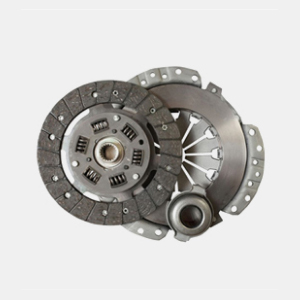-
 Afrikaans
Afrikaans -
 Albanian
Albanian -
 Amharic
Amharic -
 Arabic
Arabic -
 Armenian
Armenian -
 Azerbaijani
Azerbaijani -
 Basque
Basque -
 Belarusian
Belarusian -
 Bengali
Bengali -
 Bosnian
Bosnian -
 Bulgarian
Bulgarian -
 Catalan
Catalan -
 Cebuano
Cebuano -
 China
China -
 Corsican
Corsican -
 Croatian
Croatian -
 Czech
Czech -
 Danish
Danish -
 Dutch
Dutch -
 English
English -
 Esperanto
Esperanto -
 Estonian
Estonian -
 Finnish
Finnish -
 French
French -
 Frisian
Frisian -
 Galician
Galician -
 Georgian
Georgian -
 German
German -
 Greek
Greek -
 Gujarati
Gujarati -
 Haitian Creole
Haitian Creole -
 hausa
hausa -
 hawaiian
hawaiian -
 Hebrew
Hebrew -
 Hindi
Hindi -
 Miao
Miao -
 Hungarian
Hungarian -
 Icelandic
Icelandic -
 igbo
igbo -
 Indonesian
Indonesian -
 irish
irish -
 Italian
Italian -
 Japanese
Japanese -
 Javanese
Javanese -
 Kannada
Kannada -
 kazakh
kazakh -
 Khmer
Khmer -
 Rwandese
Rwandese -
 Korean
Korean -
 Kurdish
Kurdish -
 Kyrgyz
Kyrgyz -
 Lao
Lao -
 Latin
Latin -
 Latvian
Latvian -
 Lithuanian
Lithuanian -
 Luxembourgish
Luxembourgish -
 Macedonian
Macedonian -
 Malgashi
Malgashi -
 Malay
Malay -
 Malayalam
Malayalam -
 Maltese
Maltese -
 Maori
Maori -
 Marathi
Marathi -
 Mongolian
Mongolian -
 Myanmar
Myanmar -
 Nepali
Nepali -
 Norwegian
Norwegian -
 Norwegian
Norwegian -
 Occitan
Occitan -
 Pashto
Pashto -
 Persian
Persian -
 Polish
Polish -
 Portuguese
Portuguese -
 Punjabi
Punjabi -
 Romanian
Romanian -
 Russian
Russian -
 Samoan
Samoan -
 Scottish Gaelic
Scottish Gaelic -
 Serbian
Serbian -
 Sesotho
Sesotho -
 Shona
Shona -
 Sindhi
Sindhi -
 Sinhala
Sinhala -
 Slovak
Slovak -
 Slovenian
Slovenian -
 Somali
Somali -
 Spanish
Spanish -
 Sundanese
Sundanese -
 Swahili
Swahili -
 Swedish
Swedish -
 Tagalog
Tagalog -
 Tajik
Tajik -
 Tamil
Tamil -
 Tatar
Tatar -
 Telugu
Telugu -
 Thai
Thai -
 Turkish
Turkish -
 Turkmen
Turkmen -
 Ukrainian
Ukrainian -
 Urdu
Urdu -
 Uighur
Uighur -
 Uzbek
Uzbek -
 Vietnamese
Vietnamese -
 Welsh
Welsh -
 Bantu
Bantu -
 Yiddish
Yiddish -
 Yoruba
Yoruba -
 Zulu
Zulu
Eco-Friendly Green Nylon Netting for Versatile Applications in Gardening and Outdoor Projects
Exploring the Benefits and Applications of Green Nylon Netting
In recent years, the demand for sustainable materials has surged, driving innovation across various industries. One such product that has garnered attention is green nylon netting. This versatile material combines the durability of nylon with an eco-friendly color, making it an ideal choice for various applications, from agriculture to construction.
Nylon netting is a synthetic mesh fabric known for its strength, flexibility, and resistance to various environmental factors. The green color not only offers aesthetic appeal but also helps camouflage the netting in natural settings, reducing visual pollution in gardens and outdoor spaces. This aspect is especially important for landscape designers and homeowners who wish to maintain a natural look in their yards or gardens.
One of the primary uses of green nylon netting is in agriculture. Farmers often use this type of netting to protect crops from birds, pests, and harsh weather conditions. The lightweight material allows for adequate sunlight and airflow while creating a barrier that deters unwanted visitors. Additionally, the green hue mimics the surrounding foliage, which helps in minimizing the stress on plants caused by sudden changes in their environment. This protective measure can lead to healthier, more productive crops and, ultimately, higher yields.
In aquaculture, green nylon netting is also advantageous
. Fish farms utilize this material in the construction of nets and cages to house fish and other aquatic organisms. The durable nature of nylon ensures that these enclosures can withstand the harsh conditions of underwater environments, while the green color helps keep the fish calm and less stressed, promoting healthier growth rates.green nylon netting

Moreover, green nylon netting has found its way into construction and landscaping projects. It is often employed as a safety netting system to prevent debris from falling off scaffolding or construction sites. The bright green color can enhance visibility, alerting workers and passersby to potential hazards. In landscaping, netting is frequently used for erosion control on slopes and hillsides, stabilizing soil and encouraging vegetation growth. The porous nature of the netting allows for water drainage, preventing saturation and potential landslides while supporting the structure of newly planted areas.
The environmental benefits of green nylon netting should not be overlooked. Many manufacturers are now producing nylon from recycled materials, reducing the reliance on virgin resources and decreasing overall environmental impact. Additionally, nylon's durability means that products made from this material are likely to have a longer lifespan, which translates to less waste in landfills. When disposed of properly, nylon netting can also be recycled, further contributing to a circular economy.
However, it is essential to consider the proper maintenance and disposal of nylon netting to maximize its environmental benefits. Regular inspections can help identify wear and tear, allowing for timely repairs that can extend the netting's life. When the time comes for replacement, seeking recycling options or donating unused netting can help minimize waste.
In conclusion, green nylon netting is a remarkable material that offers a blend of functionality, aesthetics, and sustainability. Its applications in agriculture, aquaculture, construction, and landscaping highlight its versatility and effectiveness. As the world continues to recognize the importance of eco-friendly practices, green nylon netting stands out as a practical solution that aligns with the growing demand for sustainable materials and responsible resource management. Whether you're a farmer, builder, or gardener, the benefits of integrating green nylon netting into your projects are undeniable, promoting both efficiency and environment-friendly practices.
-
Shipping Plastic Bags for Every NeedNewsJul.24,2025
-
Safety Netting: Your Shield in ConstructionNewsJul.24,2025
-
Plastic Mesh Netting for Everyday UseNewsJul.24,2025
-
Nylon Netting for Every UseNewsJul.24,2025
-
Mesh Breeder Box for Fish TanksNewsJul.24,2025
-
Expanded Steel Mesh Offers Durable VersatilityNewsJul.24,2025











